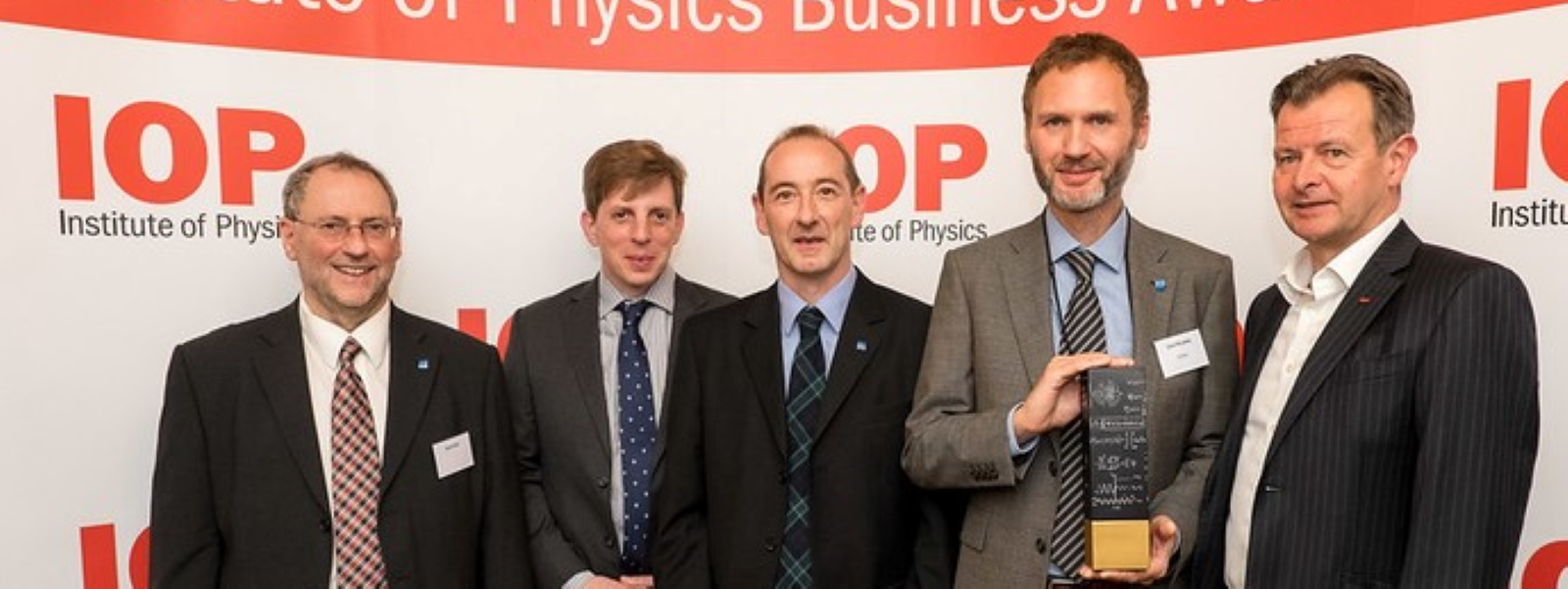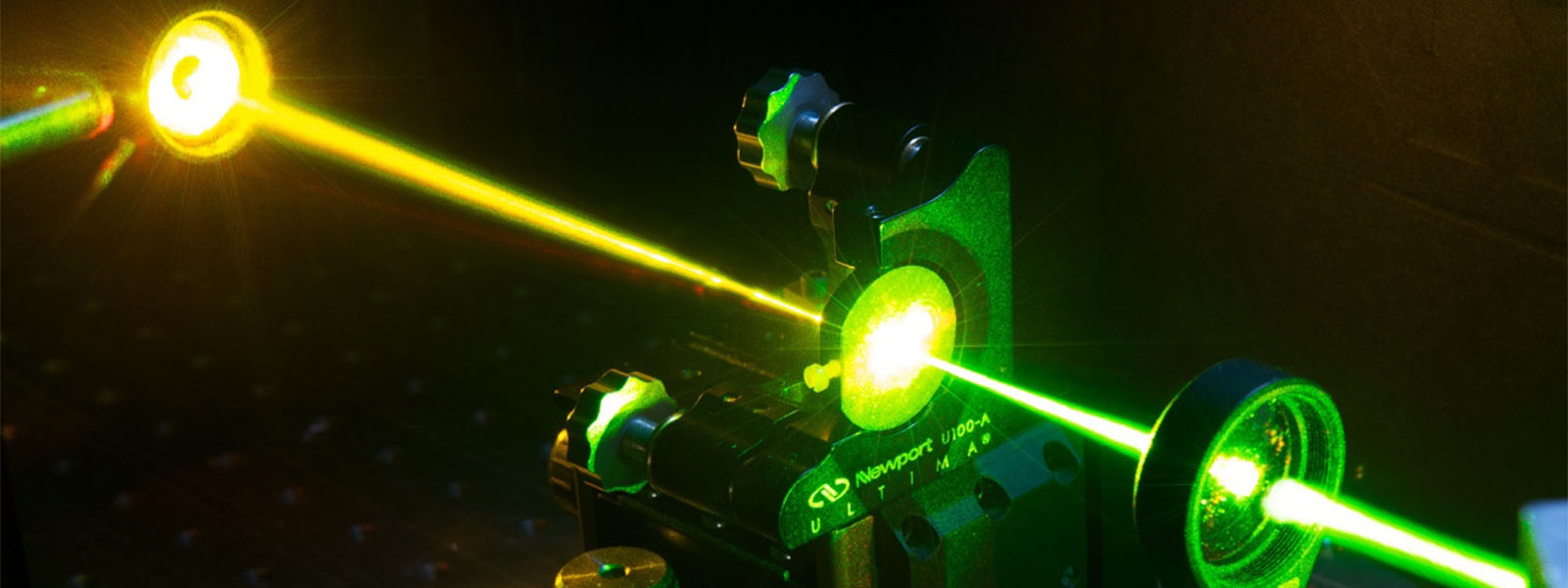In line with Strathclyde’s ambition of ‘useful learning’, the Physics Department is extensively involved in collaborations both local and international, working with partners across industry, the public sector, and wider society to put our research to work. Our impact benefits the economy, society and policy making, and our outreach efforts take physics into our local community.
Economic Impact
Strathclyde Physics has supported a wide range of companies in commercialising new technologies, delivering jobs, and driving growth. The highlights below give a flavour a broader range of activity.
Spectroscopy & Sensing
Cascade Technologies (now part of the Emerson) and HORIBA Jobin Yvon IBH both trace their histories back to Strathclyde spinouts based on innovations in quantum-cascade-laser based gas-sensing and fluorescence lifetime spectroscopy respectively. These thriving companies have state-of-the-art product lines that build on these technologies and use them to enable important tools for applications including pollution detection, leak detection, and medical research.
Find out more
- IBH: Strathclyde’s first ever spin out
- Global engineering company acquires Strathclyde physics spin-out
- Award for long-established Strathclyde spinout company

HORIBA Jobin Yvon IBH win Institute of Physics Business Innovation Award (Prof. David Birch, Strathclyde Physics and HORIBA Jobin Yvon IBH far left)
Lasers & Photonics
The Department of Physics has a long history of scientific and industrial innovation in lasers and photonics, spinning out companies including Microlase and mLED (now part of Facebook) and setting up the industry focussed Institute of Photonics. Microlase seeded the foundation of Coherent Scotland (part of Coherent Inc.) and M Squared, who are now two of the world’s leading suppliers of scientific lasers. Strathclyde Physics, through its Institute of Photonics, was instrumental in the foundation of the first Fraunhofer Centre in the UK: the Fraunhofer Centre for Applied Photonics (Fraunhofer CAP). Fraunhofer CAP has gone on to become a vital part of the innovation infrastructure for Scottish and UK photonics, supporting dozens of companies to deliver world-class R&D. More recently, the Institute of Photonics also span out NeuroVLC, a company applying photonics technologies to brain-related health conditions and diseases.
Find out more
- Coherent Opens Manufacturing Facility In Glasgow
- Facebook VR firm buys Strathclyde University spin-out
- Fraunhofer Center for Applied Photonics opens in Glasgow
Materials
The Department’s work in the materials area includes significant innovation in gallium nitride, which underpinned the spin-out of mLED (now part of Facebook). In addition, we have been working for over a decade with Element Six, the world’s leading manufacturer of diamond for high tech applications. This collaboration has helped Element Six to deliver innovative new diamond material to a range of applications in photonics.
Find out more
- Diamond for laser applications
- Facebook VR firm buys Strathclyde University spin-out

First monolithic diamond Raman laser – built by Strathclyde using Element Six diamond
Quantum Technology
Strathclyde Physics is involved across all four of the UK’s National Quantum Technology Hubs, driving the transfer of this enabling technology to UK industry. The hubs cover the gamut of Quantum Technology: sensors and timing, communications, imaging, and computing. Strathclyde is also partnering directly with industry, for example with M Squared, and supporting the Fraunhofer Centre for Applied Photonics in their Quantum Technology R&D with industry.
Find out more
- Strathclyde joins UK’s largest industry-led quantum computing project
- M Squared’s Quantum Centre
- M Squared and Strathclyde quantum partnership secures £4.6M
- Fraunhofer CAP leads £10m drive to progress optical-quantum technology
Societal & Policy Impact
Research in the Department of Physics has supported important technological benefits across the biological and medical sciences. Examples include the innovative Mesolab that has opened up unique opportunities by enabling imaging of large samples in unprecedented detail and neuro-photonic technologies that are helping to enable greater understanding of the brain. Policy impacts include supporting the foundation of the Fraunhofer Centre for Applied Photonics – a novel addition to UK innovation policy landscape that answers some of the challenges set by the influential Hauser and Dyson reviews. Prof. Martin Dawson – Director of Research at the Institute of Photonics (part of Strathclyde Physics) and Head of the Fraunhofer Centre for Applied Photonics gave a keynote address to the 2021 Annual Gathering of the Scottish Universities Physics Alliance on “Applied Research in Photonics: Achieving Impact from Physics.”
Find out more
- New technologies for investigating diseases in the deep brain
- Mesolab
Outreach & Continuing Professional Development
In the continuing professional development (CPD) arena, Strathclyde Physics has partnered with the National Manufacturing Institute of Scotland (NMIS) and Scottish Government's National Transition Training Fund to offer CPD programmes, initially in the lasers area. This course was commissioned by NMIS in collaboration with Technology Scotland and targets the retraining and upskilling of unemployed individuals, supporting recruitment into the photonics industry.
